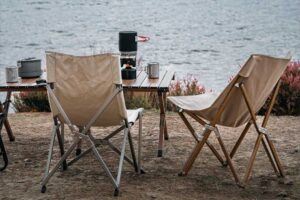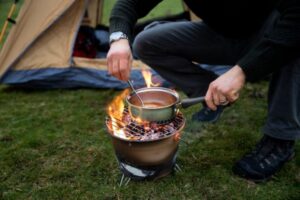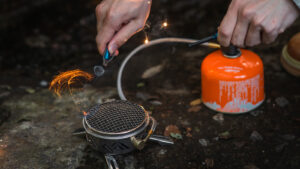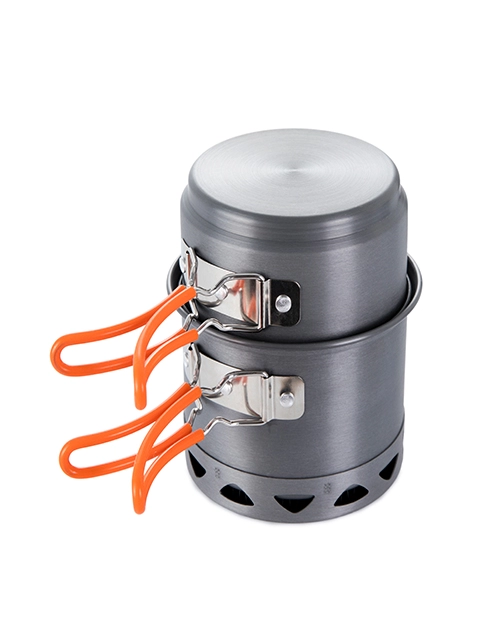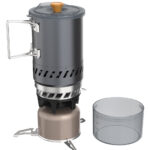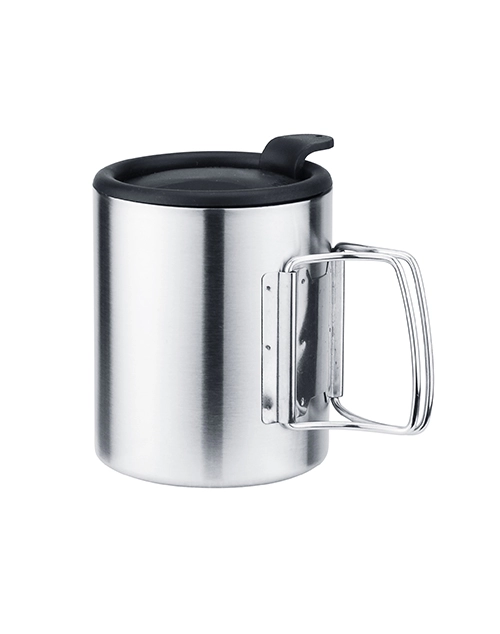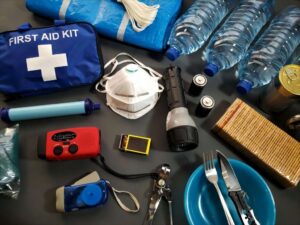
However, camping also puts you out of your comfort zone. Factors like being out in the elements, walking over rough terrain, and encountering potentially dangerous wildlife can all pose risks if underestimated.
The good news is by packing a first aid kit with all the essentials for your camping trip, you can confidently handle any incident. Here is everything you must include in your camping first aid kit to ensure a safe and enjoyable trip.
General Camping Supplies
While these won’t be part of a first aid kit, it’s important to mention that camping exposes you to the elements, and you need to prepare accordingly. Make sure you have:
- Plenty of clean water
- Plenty of food (preferably with a long shelf-life)
- A form of shelter
- A source of warmth to prevent conditions like hypothermia
- A source of light
Cleaning and Disinfecting Wounds
Cleaning and disinfecting wounds is important no matter where you are, but it is vital when you are camping. This is because you might be far away from professional help, and you might be unable to shower or clean yourself regularly, leading to a buildup of bacteria on the skin that could enter a wound. This is even more important for kids, who are more likely to get dirty while playing and will be less conscious about protecting an injury.
To prevent any infections, make sure your first aid kit has:
- Hand sanitiser:For keeping your hands clean when soap and water aren’t readily available.
- Clean water:For quickly washing a wound to assess its severity.
- Disinfectants:For cleaning a wound before treatment.
- Antiseptic and antibacterial wipes:For clearing debris from a wound.
- Saline solution:For cleaning the wound.
- Sterile eye drops: For clearing debris from an injured or irritated eye.
Ensuring that your camping first aid kit has all of these supplies will allow you to quickly and thoroughly clean and sterilise any area of the body.
Dressing Wounds
Once a wound is clean, you need to dress it. For a serious injury, this may be to stop the bleeding, but it is also important to dress smaller wounds as well. Even small cuts can quickly become infected while camping. Flora and fauna, as well as water and dirt, can all contain harmful bacteria that could worsen an injury.
To make sure you are prepared for any severity of injury, your camping first aid kit needs to include:
- Band-Aids:For quickly dressing small cuts (pack plenty of these if you have young kids!).
- Gauze pads and bandages:For closing and covering wounds that are too large for a Band-Aid, and for creating slings for sprains or fractures.
- Burnaid dressings:For covering and treating burns (avoid regular bandages for these if possible as the fibres can get stuck to the wound and be painful or damaging when removed).
- Sports tape:For supporting sprained joints or for wrapping around larger lacerations.
- Duct tape or clips:For holding bandages together.
If the wound is small, your supplies will allow you to dress it and continue enjoying your camping trip. For a large laceration, being well-prepared is potentially the difference between a person making it to the hospital or not.
Pain and Allergy Relief
Once an injury has been cleaned and dressed properly, you’ll also want to take some pain relief measures. If you plan to continue your trip, this is essential for making sure you can still enjoy yourself. Be certain that your camping first aid kit contains:
- Pain relief medication: Such as Panadol.
- Cold & flu medication:Such as Codral.
- Antihistamine tablets: For allergic reactions.
- Ice and heat packs: For sprain pain management.
- Anti-sting ointments:To alleviate pain or irritation from insect bites or stings (these are really important for camping where insect bites are much more common).
- Sunscreen:For sun protection, and some form of moisturiser or sunburn relief cream in case you do experience sunburn.
People often focus on how to treat an injury, but not how to manage the pain afterwards. In many ways, for non-serious injuries, pain management is actually the most important step. A mild sunburn, for example, may not be life-threatening, but the pain it causes will stop you from being active and enjoying your camping trip.
Essential Tools
Most people remember supplies like bandages but forget about tools that help them use them. For example, if you have a single long bandage, you’ll want to pack scissors or you will struggle to cut it. To make sure the rest of the supplies in your camping first aid kit are usable and effective, make sure you bring:
- Scissors or a knife:For cutting bandages or clothing.
- Sewing supplies: For repairing holes in clothing caused by an injury or as an emergency method for sewing a serious laceration shut.
- Tweezers:For removing things like thorns, prickles, and stingers, and for clearing small pieces of debris from a wound.
- Gloves:For protection from bodily fluids and to prevent the wearer from accidentally contaminating the wound themselves.
- Pen and paper:For documenting things like time of injury, types of medication given, or types of first aid performed, in the case of needing professional help.
- EPIRB: An Emergency Position Indicating Radio Beacon is vital if you are going to a very remote location on your own. If you are out of range of emergency services, activating the beacon will geolocate you no matter where you are on Earth and signal to relevant authorities that you need assistance.
With these tools, your camping first aid kit ais complete. You can now head off into the wilderness with the confidence that you can deal with any unforeseen accidents, right?
Well… sort of. While having a fully stocked camping first aid kit is a great starting point, having the knowledge to use it effectively will truly equip you for your outdoor adventures.

